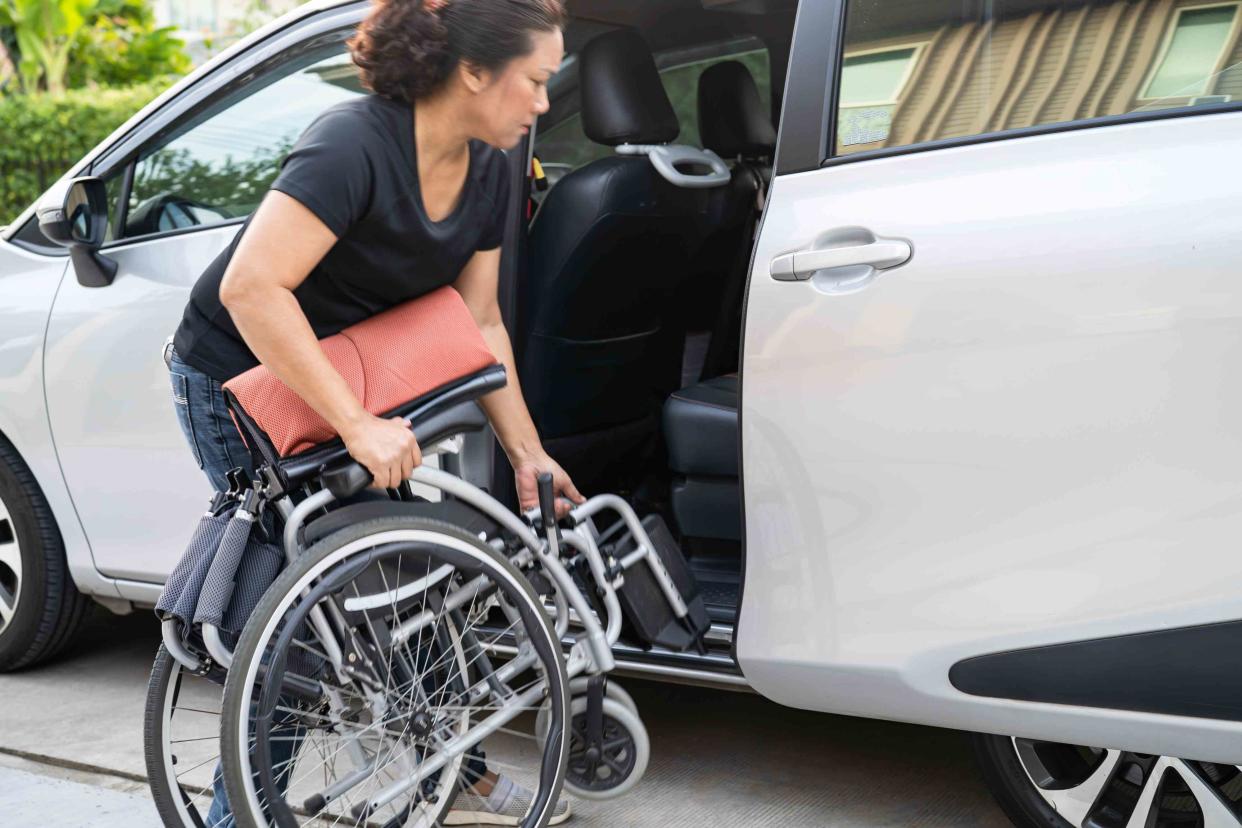This New Service Can Help You Find Medical Equipment to Borrow for Free

Fact checked by Nick Blackmer
Key Takeaways
Because of cost and access issues, many people who need medical equipment—such as walkers and wheelchairs—borrow them from local medical equipment loan programs.
A new online directory called GotDME? lists details about lending programs in all 50 states.
A new online directory of medical equipment loan programs aims to make it easier for people to borrow durable medical equipment such as wheelchairs, walkers, and shower chairs at no cost. The service, called GotDME?, is a first-of-its-kind resource listing lending programs in all 50 states.
Durable medical equipment (DME) refers to tools and devices that can be used many times at home.
“Easy borrowing of this kind of equipment is crucial,” Elliot Sloyer, founder and director of Wheel It Forward, a DME loan program in Fairfield County, Connecticut, told Verywell. The staff at Wheel It Forward created and will maintain the new directory.
While medical equipment is critically important to many people who have suffered injuries or have chronic conditions, not everyone can easily access what they need. Sloyer says barriers to access include things like:
Lack of insurance
Steep copays and deductibles
Insurance rules (e.g., Medicare does not cover shower chairs and generally only pays for a new wheelchair every five years)
Medical equipment loan programs exist all over the country, but many are small and housed at churches or community centers. They may not have staff available to answer questions or a website that lists their hours.
The new directory lists as much information as possible for programs in every state.
“Based on Wheel its Forward’s inquiry data, there are likely millions of people every year scrambling to borrow and donate durable medical equipment across the U.S.,” Sloyer said. With a national directory, “people in need of equipment can easily find out what’s available in their community, get contact information, and learn about general inventory information and guidelines,” he added.
Cost Savings Are the Biggest Benefit
Lending programs generally do not charge a fee, though a few programs may ask for a small deposit to improve the chances that you will return an item when it is no longer needed.
“People will drive 100 miles to get a free wheelchair, but they won’t necessarily go that distance to return one,” Mark Waterson, CEO of the Convalescent Aid Society, a 100-year-old loan program in Pasadena, California, told Verywell.
A national online directly will make it easier to compare inventory at different lending programs. Not all programs have the same equipment in stock; walkers are more common than hospital beds, for example. Abigail Leeds, 70, of Silver Spring, Maryland, who was recently diagnosed with Parkinson’s disease, was able to find different pieces of equipment by checking two loan programs near her home.
Based on her experience, Leeds recommends thoroughly checking the items you wish to borrow.
“My husband went to pick up a wheelchair and the process was easy,” she told Verywell. “However, the equipment is like the [book] lending library—some items were in great shape, and some were not. It was self-serve, so he took his time and checked the wheelchairs carefully.”
After her husband selected the best option, Leeds kept the wheelchair for two months.
“I was thrilled to have it to use. My situation is in flux medically, so I wanted to try using a wheelchair before needing to buy one,” she said. “I learned a lot about what I would look for when it becomes time to purchase.”
Another reason for borrowing? Sloyer said the average piece of home medical equipment has a lifespan of over five years but is used for only four months.
“This results in a huge supply of lightly used DME being discarded into garages, basements or worse—landfills,” Sloyer said.
"I wanted to try using a wheelchair before needing to buy one. I learned a lot about what I would look for when it becomes time to purchase."
Abigail Leeds
Sloyer said GotDME? will be collecting data on how many people each lending organization serves, what types of equipment they lend, and how much of it they stock.
“The goal is to identify data points and trends in the DME lending space so that we can make this industry more impactful,” he said.
Ask About New Equipment First
If you have an illness or injury that requires medical equipment, start by asking your doctor, hospital social worker, or health insurance company about the options and cost of purchasing new equipment.
“We typically recommend that patients access new equipment to ensure it is good quality and in good working order,” Matthew N. Bartels, MD, MPH, Chairman of the Department of Rehabilitation Medicine at the Montefiore Health System in New York City, told Verywell. “However, if someone must borrow products, they should make sure the items are in good condition, have been properly sized and adjusted, and have been thoroughly disinfected to avoid the transfer of infections.”
Ask whether an item has been disinfected when it is returned—most lending programs take care of that—and also whether there is staff on hand that can show you how the equipment works.
“It’s essential that people using equipment have been properly trained in the use of the equipment and in maintaining it in working condition,” Bartels said.
What this Means For You
If you need a piece of medical equipment, check with your doctor about what equipment is recommended, what coverage options are available, and what local loan programs are available for used equipment. You can do that last step on your own using the GotDME? website.
If you have medical equipment at home that you’re no longer using, consider donating it to a loan program.
Read the original article on Verywell Health.

